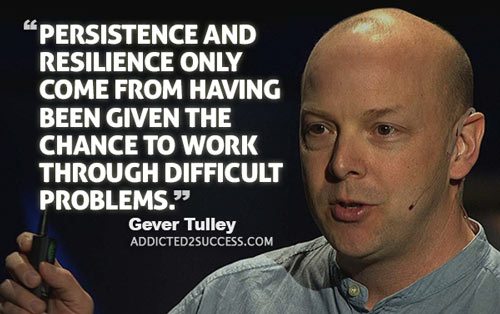Motivation
4 Essential Steps To Push You Ahead of the Pack

Just like you, a lot of folks start the process of becoming a better version of themselves. And just like you, they can get some momentum going when things are happening as planned.
But then, all of a sudden, something pops up to disturb their routine. Now they are faced with a dilemma. Are they going to let their habits slide for the moment and get back to them once their routine gets normal again? Or are they going to push through and keep moving despite getting shaken up? Most people bail, intending to get back to it, but just never quite do. Are you most people?
Are cupcakes, Amazon, and binge watching Netflix, the solution?
When something happens in our lives to throw us off course our first reaction is to look for happiness, comfort, or distraction in the quickest and easiest way possible. That’s probably going to mean buying stuff, eating crap, sleeping in and skipping a workout, watching TV, or whatever your short-term pleasure of choice may be.
While seeking short-term pleasure in the face of a bad day is not the worst thing in the world, unless you are extremely diligent, it can become a problem. Pretty quickly it can move from a one-time thing, to a habit. The problem with that is, it is a habit that doesn’t do anything to keep you headed towards your goals. In fact, it is likely counter-productive.
The super bouncy ball bounces back
There is another response you can have to the bump in the road. You can practice resilience. And the bump in the road will actually be a huge opportunity. If you practice resilience by sticking to your habits, even on your bad days, you cement your good habits. If you can keep them when things go sideways, then keeping them when things are going well will be easy peasy. So having a bad day every now and then to let you get a little resilience practice in is actually a good thing. Each time you practice, being resilient gets easier and easier. But how do you do it?

Here are the 4 steps you should take each time you feel like your good habits are on the brink of being derailed:
Step 1: You’re not going to ride a unicorn home on a rainbow highway
No matter what you do, something will eventually screw up your routine. All too often we go through life assuming that the best-case scenario will be our reality forever. But it’s not true. There’s going to be some worst-case days, or at least not best case. If you prepare yourself for them by accepting that they will occur and that you will have to show some resilience to keep moving, then you are in a position to do just that.
If you live in La-La-land, assuming everything is going to be rainbows and unicorns each and every day, when it doesn’t work out, you are going to be hard pressed to respond in a resilient way. So don’t do that. Recognize that there will be a day where keeping your habit is going to be harder than it is on most days, and make the decision to do it anyway, before you are faced with the challenge.
Step 2: Watch out for falling boulders
If you don’t recognize that something is going awry with your normal routine and that it is threatening to disrupt whatever good habits you are trying to keep up, you can’t respond to it. Instead, you will fall into bad habits without being completely aware it’s happening. And once you finally recognize it and decide that you need to do something, it will be much harder to force yourself back to your path. So be diligent.
Whenever you feel yourself slipping (skipping a workout, pushing off that meditation, telling yourself you will write your gratitudes in your journal later) ask yourself what is going on? Why today? What’s going on with my schedule? Where is my head at? Did someone do something to piss me off, make me sad or disappointed?Once you recognize the outside force that is intruding on your habits, you can then move to preventing it from negatively impacting your long-term goals.
“Your net worth to the world is usually determined by what remains after your bad habits are subtracted from your good ones.” – Benjamin Franklin
Step 3: Blessing or curse, you’re going to have to respond
You can think of your problem as a disaster and be a victim, or you can look at it as an opportunity to practice resilience and grow. Choose to see it as an opportunity. To make sure you do, be thankful for the opportunity. I mean this literally. Thank whatever is testing you, for giving you this chance to practice resilience. Do it out loud. If you made it to this step, you are way ahead of the game and you should be thankful that you were given an opportunity to practice your ability to stay on task in the face of a challenge.
So, say so out loud. Turn what could be a negative into a positive by just reframing it. The reality is this, building resilience is something you should strive for. It should be a habit on its own because having the habit of resilience makes creating all the other habits you want possible. Without it, you are destined to a start and stop cycle of habit forming that will likely get you nowhere. And the only way to create the habit of resilience is to practice it. So be thankful for that opportunity.
Step 4: Just do it
Nike was on to something. And yes, it is that simple. But without the first three steps, just doing it is a daunting thing that likely won’t get done. However, after you have gotten yourself mentally prepared through steps 1-3, the only thing left to do is to put your head down and do it even though it’s hard. You won’t feel like doing it. But, you have to do it anyway. Just act like you feel like doing it. Ask yourself, what would you do if things were going fine? Do that, even though things aren’t.
“Do you want to know who you are? Don’t ask. Act! Action will delineate and define you.” – Thomas Jefferson
Conclusion
Making sure you stay on task when it feels like the world is moving to make it more difficult is hard. But if you can do it, you will feel great, and you will be exponentially more likely to keep moving, because you did so even when it was hard. If you use Steps 1-4, you can absolutely do it. You can be resilient and you can push through when most people quit. And that will separate you from virtually everyone else.
Let’s get started, take Step 1 now by posting in the comments below the last time you tried to start a habit but it got derailed by some outside force that upset the applecart on you!
Did You Know
7 Surprising Life Lessons Video Games Taught Me That School Never Did
Want to get better at something? Study the pros. That applies to both life and video games

If you play video games, you’ll quickly discover you’re not alone. You’ll meet people who share your interests, challenge your skills, and even teach you something new about yourself. I started gaming when I was 10. A classmate invited me to play after school, and I was hooked. (more…)
Featured
The Psychology of Motivation: How to Keep Moving Forward Every Day
Discover how daily habits, self-discipline, and a few clever strategies can spark your drive and focus.

You wake up on a typical Monday morning, glance at your clock, and realize it’s time to get moving. How do you summon that inner drive to deal with your responsibilities with a genuine smile on your face? (more…)
Motivation
From Couch Potato to Go-Getter: A Step-by-Step Motivation Plan for Everyone
By understanding what motivates you, you can turn your dreams into reality

Are you tired of feeling like a couch potato? Do you want to transform your life and become a go-getter? You’re not alone! Many people struggle with motivation, but the good news is that change is possible. (more…)
Motivation
Why You’re Failing to Achieve Your Goals and How to Fix It Now
Understanding motivation is crucial because it’s the cornerstone of success

Feeling stuck? Lost in a sea of goals, but lacking the drive to pursue them? It’s time to shift gears and reignite your motivation! Picture this: From stalled to soaring, your journey awaits. (more…)
-

 Success Advice4 weeks ago
Success Advice4 weeks agoThe One Mindset Shift That Made Me Irreplaceable At Work
-

 Scale Your Business4 weeks ago
Scale Your Business4 weeks agoWhy Smart Entrepreneurs Never Skip This One Business Expense
-

 Did You Know3 weeks ago
Did You Know3 weeks ago7 Surprising Life Lessons Video Games Taught Me That School Never Did
-

 Success Advice3 weeks ago
Success Advice3 weeks agoHow Playing by the Rules Became the Smartest Business Strategy
-

 Success Advice3 weeks ago
Success Advice3 weeks agoHow to Build Trust, Kill Micromanagement, and Lead a Team That Thrives
-

 Scale Your Business2 weeks ago
Scale Your Business2 weeks agoHow to Build a Workplace People Actually Want to Show Up To
-

 Success Advice2 weeks ago
Success Advice2 weeks agoSuccess Isn’t Sexy: 5 Daily Habits That Actually Work
-

 Scale Your Business2 weeks ago
Scale Your Business2 weeks agoHow Smart Entrepreneurs Cut Financial Chaos in Half with One Simple Switch






























13 Comments